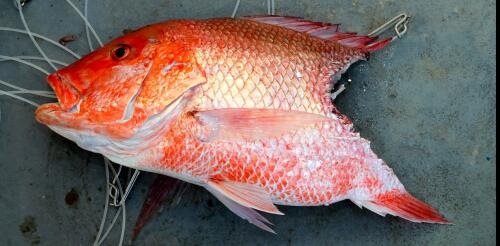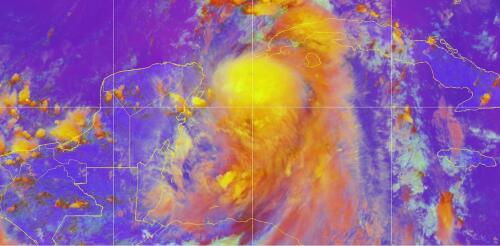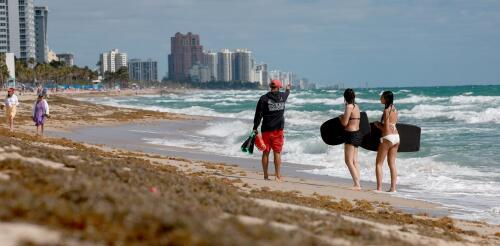Gulf of Mexico
Fishermen across the Gulf of Mexico are reporting that something is eating fish off their lines. What’s to blame? Many recreational anglers point a finger at sharks. This conflict has caught politicians’ attention. Congress has directed the National Oceanic and Atmospheric Administration, which regulates fishing in U.S. waters, to review shark and dolphin interactions with fisheries, and the U.S. House of Representatives recently passed the SHARKED Act, which would create a task force to address the problem. I’ve studied this conflict, which is formally called depredation, for the past decade. While some shark populations in the Gulf of Mexico, such as bull sharks, are increasing, my colleagues and I have found evidence that human perceptions are also an important factor. A Gulf angler races to land a fish before sharks take it. Sharky waters The Gulf of Mexico is home to more than 70 species of sharks – and those...
Most Americans will remember 2020 as the year when the pandemic changed everything. But for Lake Charles, Louisiana, and its neighbors along the Gulf Coast, it was also the year of record-setting disasters, when “once-in-a-lifetime” storms hit in such rapid succession that their impacts blurred together. A recent National Academies consensus study I worked on looked into the compounding disasters that the region faced – both physical and socioeconomic – as storm after storm arrived during the pandemic with little time for recovery. It concludes that Lake Charles’ experiences could be a harbinger of what’s to come in a warming world unless the nation fundamentally rethinks its disaster preparedness, response and recovery strategies. Lake Charles’ compounding disasters Hurricane Laura made landfall near Lake Charles on Aug. 27, 2020, as a powerful Category 4 storm, with wind speeds exceeding those that local building codes were designed...
Forecasters expected Hurricane Idalia to intensify into a major hurricane as it headed over exceptionally warm waters in the Gulf of Mexico, on track for landfall in Florida on Wednesday, Aug. 30, 2023. Hurricane warnings were posted along a wide stretch of Florida’s Gulf coast, from near Sarasota to the Panhandle, including Tampa Bay. Hurricane scientist Haiyan Jiang of Florida International University explains how two conflicting forces – record-high ocean heat and wind shear, the latter influenced by El Niño – were determining Idalia’s future, and how they have made the 2023 hurricane season overall difficult to forecast. What role is ocean temperature playing in Idalia’s forecast? Forecasters are watching several factors, but the biggest is the very high sea surface temperature in the Gulf of Mexico. The Gulf is typically warm in late August, and we often see hurricanes this time of year. But this summer, the sea surface temperature has...
Meteorologists began warning about severe weather with the potential for tornadoes several days before storms tore across the Southeast and the Central U.S. in late March 2023. At one point, more than 28 million people were under a tornado watch. But pinpointing exactly where a tornado will touch down – like the tornadoes that hit Rolling Fork, Mississippi, on March 24, and towns in Arkansas, Illinois and multiple other states on March 31 – still relies heavily on seeing the storms developing on radar. Chris Nowotarski, an atmospheric scientist, explains why, and how forecast technology is improving. Why are tornadoes still so difficult to forecast? Meteorologists have gotten a lot better at forecasting the conditions that make tornadoes more likely. But predicting exactly which thunderstorms will produce a tornado and when is harder, and that’s where a lot of severe weather research is focused today. Often, you’ll have a line of thunderstorms in an envi...
An unwelcome visitor is headed for Florida and the Caribbean: huge floating mats of sargassum, or free-floating brown seaweed. Nearly every year since 2011, sargassum has inundated Caribbean, Gulf of Mexico and Florida coastlines in warm months, peaking in June and July. This brown tide rots on the beach, driving away tourists, harming local fishing industries and requiring costly cleanups. According to scientists who monitor the formation of sargassum in the Atlantic Ocean, 2023 could produce the largest bloom ever recorded. That’s bad news for destinations like Miami and Fort Lauderdale that will struggle to clean their shorelines. In 2022, Miami-Dade County spent US$6 million to clear sargassum from just four popular beaches. Satellite image of sargassum concentrations in the Atlantic during the month of March. USF/NOAA, CC BY-ND Sargassum isn’t new on South Florida beaches, but its r...




